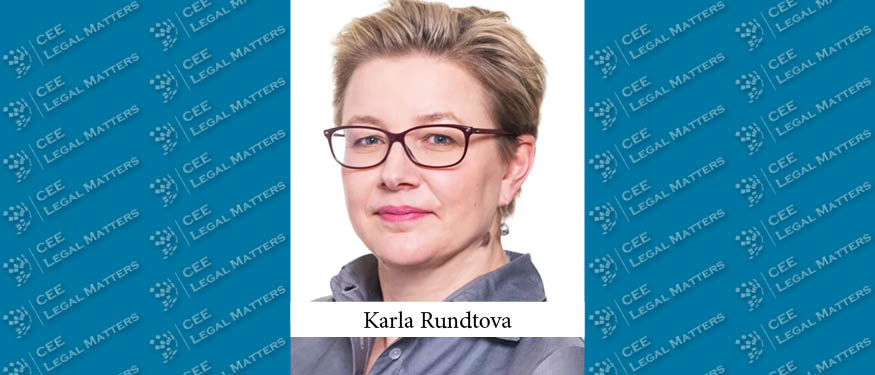On 22 February 2024, the government adopted a proposal for a new Act on Judicial Protection Procedure for Former Holders of Qualified Liabilities of Banks ("ZPSVIKOB-1 Proposal"),the purpose of which is to eliminate the identified unconstitutionality of the previous Act ("ZPSVIKOB") and to finally appropriately regulate the procedure under which former holders could claim compensation for the controversial decisions of the Bank of Slovenia on the cancellation of their qualified liabilities in 2013.
The adoption of the ZPSVIKOB-1 Proposal represents a new chapter in the long-standing process of resolving the above-mentioned issue, which follows the finding of the unconstitutionality of the previous legal bases for seeking compensation by former holders, first in the Constitutional Court’s decision No. U-I-295-13 of 19 October 2016, and then in decision No. U-I-4/20-66 of 16 February 2023. In the latter decision, the Constitutional Court annulled the ZPSVIKOB for imposing the burden of payment of compensation on the Bank of Slovenia, which constituted, inter alia, unconstitutional interference with the funds of its general reserves and (in part) a violation of the prohibition of monetary financing. In this decision, the Constitutional Court expressed the principled view that the economic burden of compensation should be borne by the state.
The ZPSVIKOB-1 Proposal takes into account the guidance of the Constitutional Court and regulates in a specific way the liability for damages, the possibility of reimbursement from a special compensation scheme and introduces a number of procedural solutions in court proceedings with the aim of relieving the burden on the courts. Overall, we consider the new provisions to be beneficial for former holders of qualified liabilities, who will be better able to obtain (at least partial) compensation for damages under the proposed new law. However, we also draw attention below to certain controversial provisions that could potentially lead to a new assessment of the constitutionality of the law before the Constitutional Court.
1. LIABILITY FOR DAMAGES UNDER THE ZPSVIKOB-1 PROPOSAL
The ZPSVIKOB-1 Proposal explicitly provides that compensation under the law is to be paid by the Republic of Slovenia, which in turn has a recourse claim against the Bank of Slovenia for any part of the damage attributable to the Bank of Slovenia’s breach of due diligence in enacting the disputed extraordinary measure. Despite the State’s liability to pay damages, the ZPSVIKOB-1 Proposal maintains the Bank of Slovenia as the defendant in the actions for damages, thus asserting a bifurcation of the actual and legal liability to pay damages, which the Constitutional Court found potentially problematic.
Although this is not explicitly stated in the ZPSVIKOB-1 Proposal, there is no doubt that it establishes (or maintains) the principle of strict liability for the payment of damages, in accordance with the positions expressed by the Constitutional Court in its decisions. The main principle that will be taken into account in assessing whether an individual former holder is entitled to compensation is the “no creditor worse off” principle, according to which no creditor should have suffered a greater loss as a result of the extraordinary measures than it would have suffered in the event of the bank’s failure. Due to the strict (objective) nature of the liability for damages, the former holders will only have to prove the existence and the amount of the damage (in light of the above principle), and the causal link between the action of the Bank of Slovenia and the damage.
2. PRELIMINARY OPINION AND COMPENSATION SCHEME
The possibility of setting up a compensation scheme through which former holders could obtain reimbursement of up to 60% of the established damage has attracted the most public attention in relation to the new law. The compensation scheme would be subsequently established by a government decree, subject to a preliminary opinion by a group of independent experts concluding that (at least some) former holders would have received payment as a result of their holdings of the cancelled financial instruments, if the measure had not been imposed. The court may only appoint a group of experts based on a proposal from the Republic of Slovenia, the Bank of Slovenia or a non-profit representative interest association acting in the interests of the former holders.
On the basis of such a preliminary opinion, the government will specify in the decree that an individual former holder may be entitled to a maximum of 60% of the value of the damage and will also specify the method of payment. We note here that even in the context of a compensation scheme, “damages” would denote the amount that the holders would receive in the absence of the extraordinary measure and not (necessarily) the face value of the instrument itself at the time of cancellation. Repayment under the compensation scheme is voluntary, and an individual will be able to refuse payment under the scheme and seek full compensation through the courts. It will also be possible to seek redress through the courts for those former holders for whom the preliminary opinion will be negative – they will however be at a disadvantage in the court proceedings, due to the rule that the court takes into account the preliminary ruling (more on this below).
3. PROCEDURAL SOLUTIONS FOR JUDICIAL PROCEEDINGS
In addition to the procedural solutions already contained in the previous law (mandatory joinder of lawsuits and a common judgment on the merits), the ZPSVIKOB-1 Proposal also introduces the possibility of collective actions for the purpose of more efficient litigation and prescribes the use of sample proceeding rules for the conduct of joined lawsuits. The court will issue a call for collective actions, which may be filed by an eligible plaintiff (with exemption from court fees) within a further two months, for all claims arising from the same decision of the Bank of Slovenia. The plaintiffs for the collective action are representative associations of former holders, and the law provides for the mandatory application of the “exclusion system” – all relevant former holders who do not declare in writing to the court their opposition to being included in the collective action within 30 days from the date of the court’s order approving the collective action will be included in the collective action. All former holders who are included in the collective action will lose their right to bring an individual action for damages.
In the event that collective actions for damages are not filed or approved, the ZPSVIKOB-1 Proposal maintains the solution from ZPSVIKOB on the consolidation of lawsuits according to the individual decision of the Bank of Slovenia, whereby the action of one plaintiff also has an effect on all other plaintiffs, if such action is to their benefit. The court will first issue a consolidated judgment on the merits, in which it will determine the extent to which there is an obligation to compensate damages under the individual orders of qualified liabilities, and then it may bifurcate the lawsuits, whereafter the plaintiffs must specify the amount of their claim no later than one month from the date of service of the final judgment on the merits, if this was not specified earlier. A plaintiff shall be entitled to damages up to the amount of the value at which he acquired each qualified liability or, in the case of shares, up to the amount of the book value of the shares before cancellation. The amount of compensation will bear interest from the date of the Bank of Slovenia’s decision until payment, but at a lower rate than the default interest rate.
With regard to establishing the existence and amount of damage, the proposal takes into account the views of the Constitutional Court in its decision U-I-295-13, i.e. the burden of proof will be reversed, which requires, inter alia, that the Bank of Slovenia proves that, when adopting the contested measure, it ensured that the individual creditors did not suffer greater losses as a result of the termination or conversion of the bank’s qualified liabilities than they would have suffered in the event of the bank’s bankruptcy. If the Bank of Slovenia fails to meet this burden of proof for an individual claimant, the application of the “no creditor worse off” principle will also indirectly result in proof of damage. As regards defining the amount of the claim, in addition to the possibility of determining the amount of damages at a later stage, the ZPSVIKOB-1 Proposal includes extensive provisions on access to information.
4. CONTENTIOUS PROVISIONS and CONCLUSION
At a general level, the exclusion of the possibility of using other grounds for liability for damages is controversial from the point of view of the right to compensation (Article 26 of the Constitution of the Republic of Slovenia). Additionally, the search for a representative organisation that could initiate the preliminary opinion procedure and/or bring a collective action on behalf of the former holders is also expected to be complicated. In the area of qualified holders, there is arguably currently no such organisation, and the pool of former holders is markedly heterogeneous, ranging from natural persons to Qualified Financial Organisations.
In relation to the compensation scheme, we highlight the broad nature of the provisions and the limitation of the compensation paid to all categories of former holders in the relatively low amount of no more than 60% of the damage suffered. The highly favourable procedural provisions in court proceedings also raise the question of the advisability of accepting compensation from the scheme. The ZPSVIKOB-1 Proposal provides that in court proceedings the court shall take into account the preliminary opinion and may only appoint “its own” expert if the factual situation is not clarified, even after supplementing and questioning the experts already appointed. Consequently, if the preliminary opinion establishes that the former holder has suffered damages, such holder would, due to the strict (objective) nature of the liability, very likely be successful in the court proceedings as well, since the main presumption of damages under the law will thus be proven, and in the court proceedings he could be compensated for the entire amount of the damage, instead of only 60%. In practice however, it is to be expected that former holders will nevertheless opt for payments from the compensation scheme for reasons of speed and certainty of payment.
As regards the collective actions, a dispute may arise as to the acceptability of the mandatory application of the “exclusion principle” in contravention of the general rules of collective action under the ZKolT, which is potentially controversial from the perspective of the right to judicial protection. In individual litigation, the compulsory consolidation of lawsuits and the applicability of the judgment on merits to all plaintiffs of the same order may prove controversial. This raises questions about possibly going against the rule that res iudicata extends only to the parties to the litigation, and about practical difficulties for the court, which will have to assess for each individual action of a one claimant, whether or not it benefits other claimants. The limitation of the amount of compensation and the fixing of the interest rate as provided for in the Proposal may also be controversial in view of the Constitutional Court’s emphasis that former holders are entitled to full compensation.
If adopted, the ZPSVIKOB-1 Proposal may be a way for former holders to finally, after 11 years, obtain the possibility to (partially) recover their investments. However, additional patience will be required to resolve their claims; despite a number of new procedural institutes, the adjudication of the defined claims must be individually resolved for each former holder, which, given the expected multiplicity of claims (there are more than 100,000 former holders), may lead to court congestion and backlogs. Former holders can opt instead for payout from the compensation scheme. However, given the disagreement of some former holders with the proposed limitation of the amount of compensation from the scheme to 60% of the damages, there is a real possibility that the law will be challenged again before the Constitutional Court. We will therefore likely still have to wait for an epilogue to the story.
By Luka Hribernik, Associate, Jadek & Pensa

















